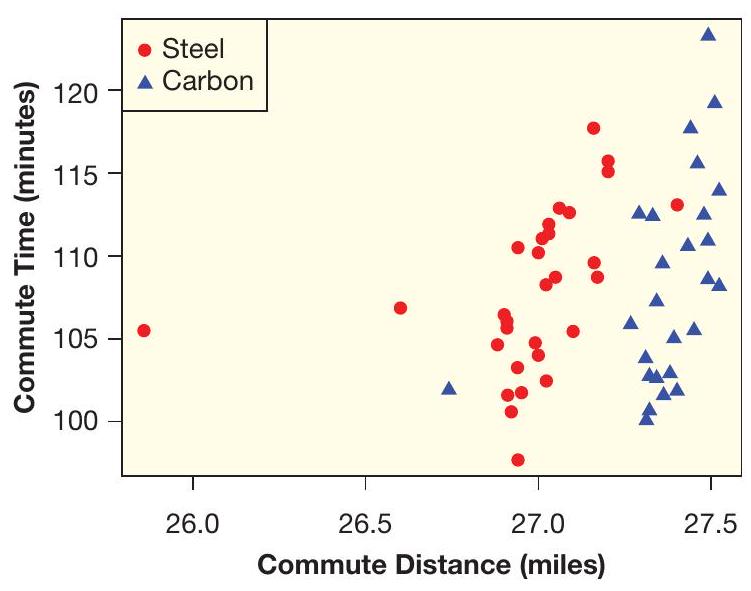Are Carbon or Steel Bikes Faster? Dr. Jeremy Groves was interested in whether his carbon bike or
Question:
Are Carbon or Steel Bikes Faster? Dr. Jeremy Groves was interested in whether his carbon bike or his steel bike led to a shorter commute time. To answer this, he flipped a coin each day to randomly decide whether to ride his $20.9 \mathrm{lb}(9.5 \mathrm{~kg})$ carbon bike or his $29.75 \mathrm{lb}(13.5 \mathrm{~kg})$ steel bike for his 27 mile round trip commute. His data for 56 days are stored in BikeCommute. (We're not sure why distance wasn't always the same, but apparently it wasn't.) Upon inspection of the data, he finds that the commute took an average of 107.8 minutes on the steel bike and 108.3 minutes on the carbon bike, suggesting the steel bike is faster, but he also finds that the average speed on the steel bike was 15.05 $\mathrm{mph}$ and the average speed on the carbon bike was $15.19 \mathrm{mph}$, suggesting that the carbon bike is faster. What's going on?!?
(a) Using Figure 2.96, what is the most obvious difference between commutes on the steel and the carbon bike?
(b) Use your answer to part (a) to explain why the carbon bike is slightly faster in terms of average speed, but yields a longer commute time, on average.
(c) In this study investigating whether the steel or the carbon bike yields a shorter commute time, a confounding variable is present. What is the confounding variable?
(d) What advice would you give to Dr. Groves to minimize his commute time?

Figure 2.96 Commute distance and time, by type of bike
Step by Step Answer:

Statistics, Enhanced Unlocking The Power Of Data
ISBN: 9781119308843
2nd Edition
Authors: Robin H Lock, Patti Frazer Lock, Kari Lock Morgan, Eric F Lock, Dennis F Lock





